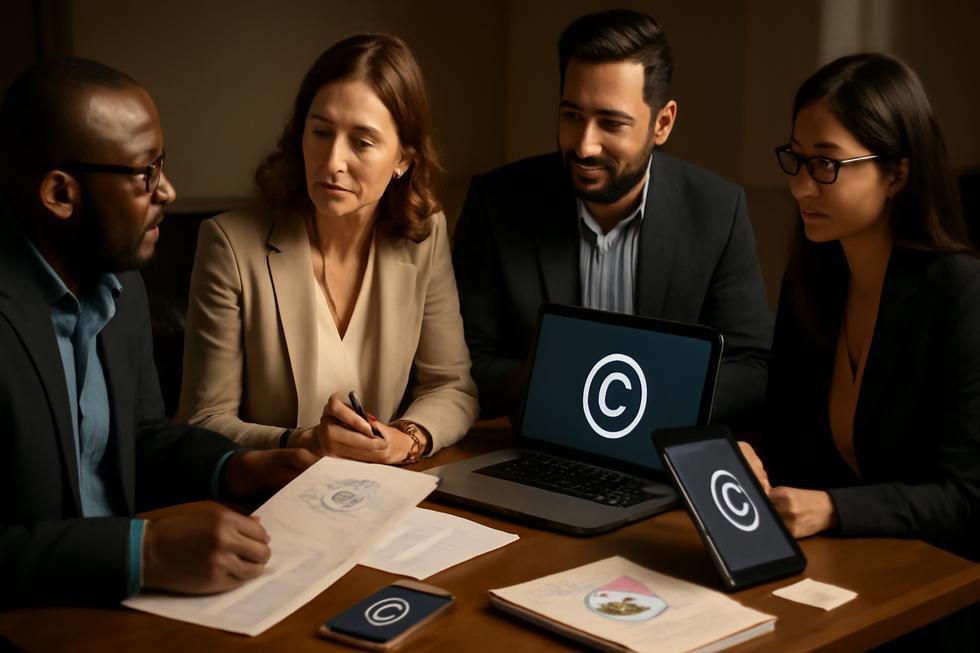Introduction
Navigating the complex world of copyright language is crucial for business owners who create, distribute, or manage original works. Copyright language lays the legal groundwork that defines ownership, usage rights, and protections for your creative materials. Understanding its components not only safeguards your assets but also clarifies your permissions and limitations when interacting with others. This guide unpacks critical elements of copyright language across six focused chapters: from fundamental legal terms and rights, to fair use considerations, public domain nuances, and the impact of AI-generated content. Each chapter advances your knowledge, offering practical advice to confidently draft copyright language tailored to your business needs.
Tables of Contents
Chapter 1: Understanding Copyright Language: Key Legal Terms and Notices
- Core Legal Concepts Behind Copyright Language: Exclusive Rights and Protections
- The Vital Role of Copyright Notices in Asserting and Communicating Ownership
- Balancing Rights and Access: How Fair Use and Fair Dealing Shape Copyright Exceptions
- Decoding Public Domain: When Creative Works Become Free for All
- Navigating Copyright Transfers, Licensing Agreements, and Judicial Interpretations
Chapter 2: Exclusive Rights and Permissions in Copyright Language
- Navigating the Legal Landscape of Exclusive Copyright Rights and Permissions
- Navigating Exclusive Licenses: How Copyright Language Grants and Limits Exclusive Usage Rights
- Shaping Control: How Copyright Transfers Define Exclusive Rights and Creative Authority
- Economic Incentives and Technological Impact of Exclusive Copyright Rights
- Navigating Exclusive Rights: Societal Impact and Geopolitical Dimensions in Copyright Language
Chapter 3: Incorporating Fair Use and Fair Dealing Disclaimers in Copyright Language
- Navigating Legal Principles Behind Fair Use and Fair Dealing Disclaimers
- Crafting Clear and Balanced Fair Use and Fair Dealing Disclaimers in Copyright Texts
- Harnessing Digital Tools to Effectively Communicate Fair Use and Fair Dealing Rights
- Economic Implications of Fair Use and Fair Dealing Disclaimers in Copyright Texts
- Balancing Rights and Realities: The Societal and Geopolitical Impact of Fair Use and Fair Dealing Disclaimers
Chapter 4: Public Domain Considerations in Copyright Language: Translations and Adaptations
- Navigating Copyright Protection in Public Domain Translations and Adaptations
- Originality and Derivative Rights: Crafting Copyright in Translations and Adaptations of Public Domain Works
- Cross-Border Complexities in Public Domain Usage: Jurisdictional Nuances for Translations and Derivative Works
- Ethical Attribution and Fidelity in Public Domain Translations and Adaptations
- Navigating Public Domain Translations and Adaptations: Practical Strategies and Trusted Resources
Chapter 5: Addressing AI-Generated Content in Copyright Language
- Clarifying Human Authorship: Legal Boundaries for AI-Created Works
- Defining Boundaries: Excluding Purely AI-Generated Content from Copyright Claims
- Decoding Legal Challenges of AI Training Data in Copyright Language
- Navigating Legal Challenges and Emerging Litigation Around AI-Generated Works
- Balancing Human Authorship and Legal Risks in Copyright Language for AI-Generated Content
Chapter 6: Practical Examples and Best Practices for Drafting Copyright Language
- Crafting Precise and Effective Copyright Notices: Key Identification Elements and Best Practices
- Customizing Copyright Language for Audience and Content: Strategies for Clear, Effective Protection
- Crafting Clear and Effective Copyright Assignment Clauses for Reliable Rights Transfer
- Crafting Clear Attribution and Licensing Statements for Effective Copyright Communication
- Ensuring Clarity and Compliance: Digital Communication and Contact Details in Copyright Language
Chapter 1: Understanding Copyright Language: Key Legal Terms and Notices
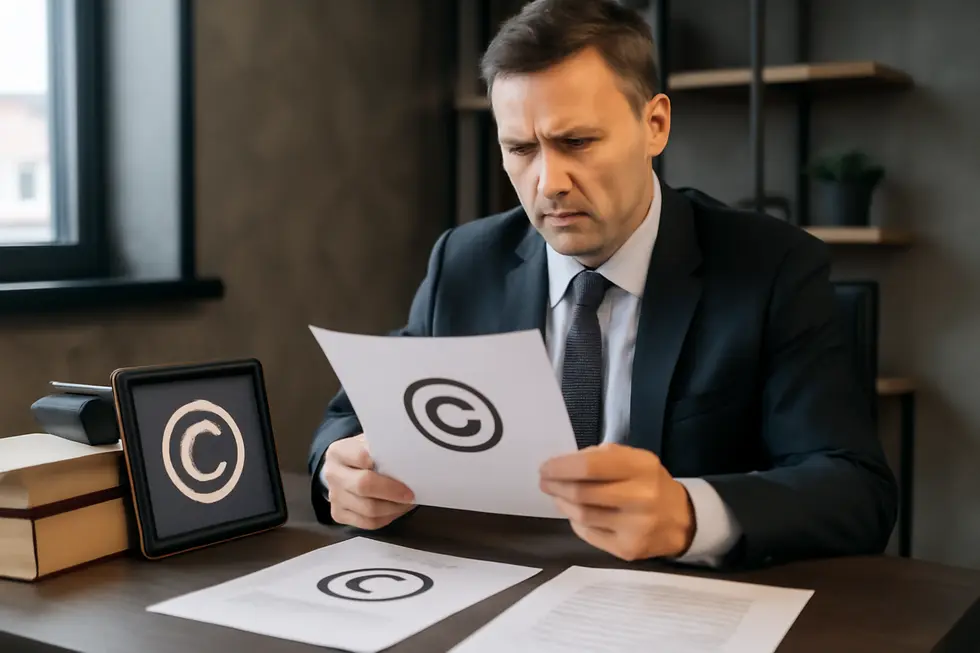
1. Core Legal Concepts Behind Copyright Language: Exclusive Rights and Protections
Copyright law grants creators exclusive rights over original works fixed in tangible forms—whether literary, artistic, or musical. This protection safeguards the particular expression of ideas, not the ideas themselves. Key legal concepts define what copyright entails: an original work must be independently created and fixed, ensuring it qualifies for legal coverage. Owners possess a bundle of exclusive rights, including reproduction, distribution, public display or performance, and creating derivatives. These rights allow authors to control and monetize their creations. Copyright’s duration generally extends for the author’s life plus seventy years, after which works enter the public domain for unrestricted use. Additionally, copyright law permits licensing—temporary permissions to use a work under set terms—and assignment, transferring ownership. This system balances rewarding creators while enriching public culture over time. For further exploration of the economic and business aspects tied to these rights, see this detailed overview of copyright definition and economics.
2. The Vital Role of Copyright Notices in Asserting and Communicating Ownership
Copyright notices are concise yet powerful statements that clearly mark a creative work as protected, identifying the copyright owner and the year of first publication. Though no longer legally required in the United States since 1989, their inclusion remains highly recommended because they signal to the public that the work is under copyright protection and help deter unauthorized use. Typically, these notices feature the © symbol, the name of the owner, and the year when the work was first fixed in a tangible form. Including such a notice clarifies the ownership rights and reduces claims of innocent infringement in potential legal disputes by making clear the user should have known about copyright protection. Beyond the notice on the work itself, copyright infringement notices serve as formal communications to unauthorized users, requesting cessation or removal of infringing content, especially online, and help document enforcement actions vital for legal proceedings. Copyright notices thus function as essential tools for creators and rights holders, bridging legal protection with public awareness and enforcement. For more guidance on effective copyright notices, consult resources like those from the University of Pennsylvania Libraries.
3. Balancing Rights and Access: How Fair Use and Fair Dealing Shape Copyright Exceptions
Copyright exceptions, including fair use and fair dealing, provide essential legal pathways for using copyrighted works without explicit permission. Fair dealing, common in Commonwealth countries, narrowly permits uses like research, criticism, or news reporting under strict fairness criteria, such as minimal use and non-disruption of the market. In contrast, the U.S.-based fair use doctrine offers broader flexibility, assessing four factors to determine if a use—ranging from teaching to commentary—is permissible. Both doctrines seek a delicate balance between protecting creators’ control and enabling socially valuable uses that nourish education and cultural exchange. Additional statutory exceptions allow activities such as library preservation and interlibrary loans within defined limits. Understanding these nuanced limitations clarifies how copyright language safeguards both ownership and public interest, fostering a dynamic creative ecosystem. For deeper guidance, see the U.S. Copyright Office’s fair use overview. For further insights into legal frameworks that often intersect with copyright, explore this article on copyright distribution rights for business.
4. Decoding Public Domain: When Creative Works Become Free for All
Decoding Public Domain: When Creative Works Become Free for All
The public domain represents creative works no longer shielded by copyright or intellectual property protections, allowing unrestricted use by anyone. Works enter this realm through expired copyrights—typically 95 years post-publication for older U.S. works—or because they never qualified, like U.S. federal government creations. As of January 1, 2025, most works published before 1928 fall into the public domain, enabling free reproduction, adaptation, or commercial use without permission or fees. However, access conditions from institutions may still apply. Notably, public domain status is distinct from fair use, which allows limited unauthorized use of copyrighted works. Recognizing when a work is truly public domain clarifies what copyright language conveys about the rights relinquished and empowers lawful, open utilization. For more on rights managing distribution, see copyright distribution right for business.
For official guidelines, visit the U.S. Copyright Office.
5. Navigating Copyright Transfers, Licensing Agreements, and Judicial Interpretations
Navigating the complexities of copyright language involves grasping how exclusive rights are assigned, licensed, and shaped by judicial precedent. Copyright grants creators control over reproduction, distribution, adaptation, and public use of their work, yet these rights can be transferred through legal assignments or shared via licensing agreements. Assignments convey ownership fully or partially to another party, often with terms about duration and reversion rights, such as statutory termination after decades, ensuring authors can reclaim their rights. Licensing, by contrast, permits use without ownership transfer, allowing creators to set conditions on how, where, and for how long their works may be employed. Case law is equally pivotal in interpreting these provisions—courts clarify ambiguities and adapt legal boundaries to evolving contexts. Landmark rulings have established foundational principles like the creativity threshold and protection of independently created works. This dynamic interplay between language, contracts, and legal interpretation ensures copyright both protects creators and adapts to technological and societal changes. For detailed guidance on licensing frameworks, especially in business contexts, refer to Copyright Licensing and Distribution Rights. For further insight, see the UK Copyright, Designs and Patents Act 1988 (CDPA).[1]
Chapter 2: Exclusive Rights and Permissions in Copyright Language
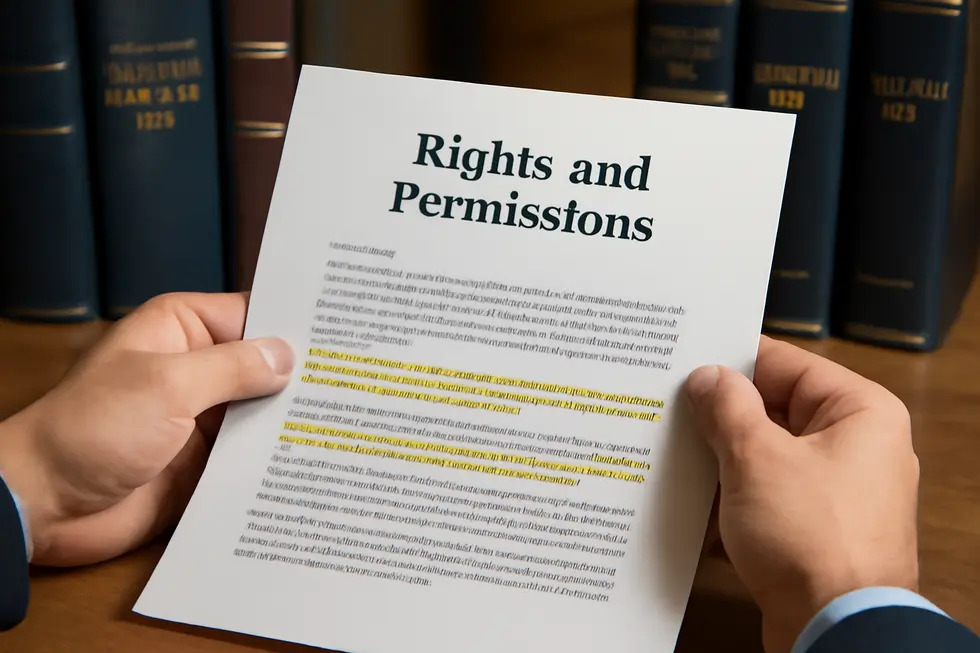
1. Navigating the Legal Landscape of Exclusive Copyright Rights and Permissions
Exclusive rights in copyright law grant creators control over reproduction, distribution, public display, and derivative adaptations of their works. Rooted in the U.S. Constitution and codified in federal law, these rights arise automatically once a work is fixed in a tangible medium. This “bundle of rights” empowers authors to authorize or restrict others’ use, thereby protecting their creative investment. Licensing arrangements, whether exclusive or non-exclusive, allow rights-holders to monetize their creations selectively. Meanwhile, full copyright transfers shift ownership and control entirely, often to entities like publishers or record labels. This system balances incentivizing new works with eventual public access. Recognizing these core principles is essential for understanding how copyright language defines and enforces the legal boundaries of creative ownership. For further insight on how these rights interplay with distribution, see copyright distribution rights in business.
2. Navigating Exclusive Licenses: How Copyright Language Grants and Limits Exclusive Usage Rights
Exclusive licenses in copyright language empower a copyright owner to grant a single party exclusive authority to exploit certain rights in a work. Unlike a full copyright transfer, this contractual agreement defines specific uses, duration, and territorial scope, enabling the licensee to control reproduction, distribution, or performance exclusively within those parameters. This exclusivity often strengthens the licensee’s market position by restricting others from using the same rights, which aligns incentives for investment in promotion and monetization. However, granting such licenses also limits the copyright holder’s ability to exploit those rights elsewhere, making carefully tailored license language crucial to preserve retained rights or restrict the licensee’s scope. For example, a publisher might receive exclusive print rights while digital rights remain with the owner. This balance in copyright agreements fosters both protection and commercial growth. For further details on licensing agreements, see the licensing agreement essentials at PatentPC. For an in-depth exploration of exclusive rights scope, consult the University of Portland guide.
3. Shaping Control: How Copyright Transfers Define Exclusive Rights and Creative Authority
Exclusive rights empower copyright holders with control over reproduction, distribution, public performance, and derivative creations of their works. When these rights are transferred—fully through copyright assignment or partially via exclusive licensing—the dynamics of creative authority shift significantly. Assignments transfer full ownership, allowing the new holder to exploit all economic benefits without further permission from the original author, who often retains moral rights like attribution. Exclusive licenses restrict rights to tailored uses, such as granting a publisher sole publishing rights while the author maintains adaptation controls. This nuanced control enables creators to share exploitation opportunities selectively while maintaining exclusivity. Such transfers are common in industries like academic publishing, where authors assign copyrights but may keep certain uses. Balancing these exclusive rights are legal limitations and voluntary renunciations that can open works to broader public use. For precise negotiation and interpretation of these rights, consulting detailed resources such as author agreements guidance is essential.
4. Economic Incentives and Technological Impact of Exclusive Copyright Rights
Exclusive rights in copyright law confer creators a temporary monopoly to control reproduction, distribution, adaptation, and public display of their works. This legal framework incentivizes innovation by allowing rights holders to monetize and license their creations, balancing private profits with public benefit. Exclusive licenses enable rights holders to authorize specific uses while retaining other rights, whereas outright copyright transfers fully shift ownership, common in publishing. Economically, these rights foster investment in creative industries and technology development by protecting content from unauthorized use. Technologically, managing exclusivity across digital platforms shapes distribution methods, monetization approaches, and access controls, driving new delivery formats tailored to diverse markets. This system necessitates nuanced legal drafting to harmonize creators’ control with fair use exceptions and interoperability challenges. For deeper insights into exclusive licensing and transfers, resources like Utah State University Libraries offer comprehensive analysis, linking economic theory with practical copyright language implications. More on copyright’s role in business economics can be found at Copyright Definition & Economics in Business.
5. Navigating Exclusive Rights: Societal Impact and Geopolitical Dimensions in Copyright Language
Exclusive rights in copyright language empower creators with control over reproduction, distribution, public performance, and adaptations of their works, typically for a limited time. From a societal standpoint, these rights balance creator incentives with public interests, promoting ethical compensation while safeguarding access to knowledge and culture. Fair use doctrines, shaped by social values, allow certain lawful uses without permission, reflecting community priorities. Geopolitically, copyright protections vary significantly between nations, influenced by differing legal systems, cultural norms, and economic agendas. International treaties harmonize standards but permit national deviations affecting scope, duration, and enforcement. These disparities impact cross-border licensing and content distribution, especially amid the digital era’s global reach. Thus, understanding exclusive rights requires consideration of diverse societal expectations and complex geopolitical dynamics. For deeper insight, see the analysis of societal and geopolitical influences on copyright. Additional details on exclusive licenses and transfers are available through external resources.
Chapter 3: Incorporating Fair Use and Fair Dealing Disclaimers in Copyright Language
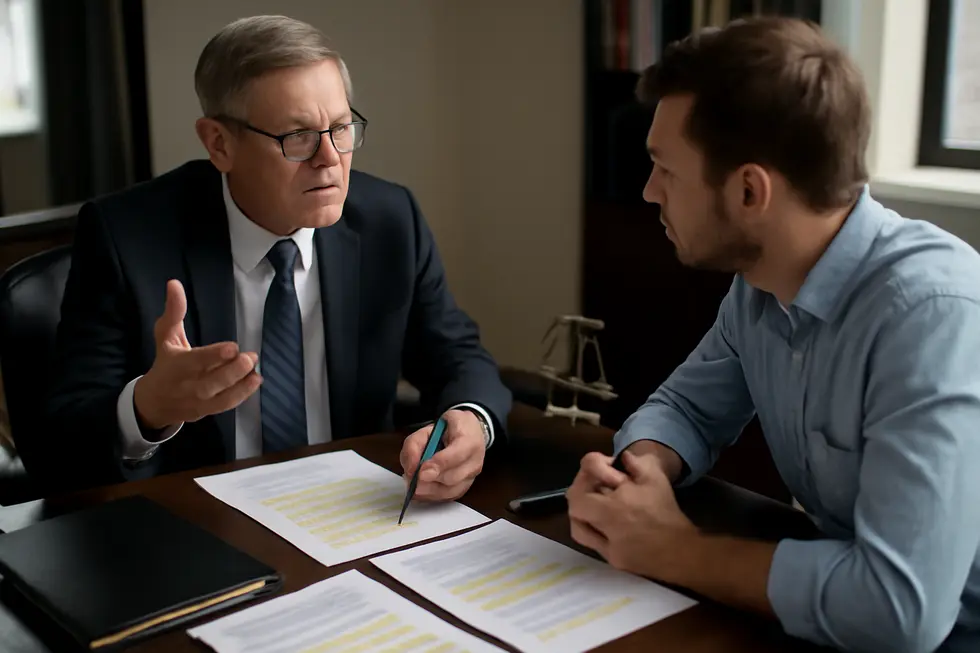
1. Navigating Legal Principles Behind Fair Use and Fair Dealing Disclaimers
Fair use in the United States is a judicially crafted exception allowing limited use of copyrighted works without prior permission. Courts assess four key factors: the purpose and character of the use, the nature of the original work, the amount used, and the effect on the work’s market value. Fair use disclaimers in copyright language educate users about potential lawful uses while clarifying that protection depends on case-specific analysis.
In Commonwealth countries, fair dealing is a statutory exception permitting limited copying for specific purposes like research, education, criticism, and news reporting. Unlike fair use, fair dealing requires the use to fall within enumerated purposes and satisfy fairness criteria, which courts interpret. Incorporating fair dealing disclaimers explicitly informs users of these codified rights.
These disclaimers complement traditional copyright notices, delineating permitted uses without consent while limiting liability. However, they must avoid overstating freedoms, as neither doctrine offers unconditional license. For a fuller exploration of fair use, see patentpc.com.
2. Crafting Clear and Balanced Fair Use and Fair Dealing Disclaimers in Copyright Texts
Drafting fair use and fair dealing disclaimers requires balancing assertive copyright ownership with clear communication of limited user rights under the law. Effective disclaimers typically start with the copyright symbol, year, and owner’s name, followed by a rights statement such as “All rights reserved” or a more permissive phrase for educational uses. Crucially, these disclaimers include tailored language acknowledging exceptions under applicable laws, citing specific provisions like Section 107 of the U.S. Copyright Act or fair dealing statutes in other jurisdictions. This note clarifies permissible uses such as criticism, review, research, or news reporting and emphasizes that such uses must satisfy fairness criteria including purpose and amount used. Including optional contact details for permissions further enhances clarity and access. Such thoughtfully crafted disclaimers protect creators’ legal interests while informing users of their rights, fostering responsible use. For detailed drafting guidance, see the step-by-step copyright disclaimer guide at LegalKart. For more on copyright in business contexts, visit copyright distribution rights.
3. Harnessing Digital Tools to Effectively Communicate Fair Use and Fair Dealing Rights
Incorporating fair use and fair dealing disclaimers within copyright language demands thoughtful technological integration. Clear and standardized formats, including the © symbol, publication year, and rights-holder details, establish immediate ownership clarity while embedding fair use notes elucidates permissible exceptions. These disclaimers often reside in footers, metadata, or near protected content, enabling both users and automated systems to recognize legal boundaries. Modern digital platforms must support dynamic updates to accommodate evolving copyright laws and judicial interpretations affecting fair use or dealing. Additionally, interface design plays a critical role, providing accessible explanations and facilitating user compliance with copyright terms. Technological compatibility with automated enforcement tools ensures balance between protection and fair use claims, reducing wrongful takedowns. Importantly, implementations should reflect jurisdictional distinctions between fair use and fair dealing, possibly leveraging geo-targeting to tailor disclaimers accordingly. Integrating these considerations ensures that copyright language communicates rights and exceptions effectively in dynamic digital environments. For detailed guidance on drafting such disclaimers, consult comprehensive resources like the LegalKart guide on copyright disclaimers. For deeper legal context on fair dealing, see fair dealing definitions and standards.
4. Economic Implications of Fair Use and Fair Dealing Disclaimers in Copyright Texts
Incorporating fair use and fair dealing disclaimers within copyright language deeply shapes economic realities for creators, platforms, and consumers alike. These disclaimers help clarify legal boundaries, reducing costly litigation and operational expenses for digital content providers. However, they can also inadvertently dilute markets by enabling AI-generated or derivative content that competes with original works. This tension can suppress royalties and shift value away from human creators toward technology users or owners. Moreover, businesses balancing disclaimers with licensing agreements face new cost structures that influence innovation and market entry. Clear fair use language can build trust and attract higher-quality market participants, yet lingering legal uncertainties may curb investment in creative and tech sectors. Understanding these economic impacts is essential to drafting precise copyright language that supports both legal clarity and sustainable market dynamics. For a deeper dive into the economics behind copyright, see copyright definition economics business. External insights from the U.S. Copyright Office highlight evolving market challenges affecting fair use in AI contexts.[1]
5. Balancing Rights and Realities: The Societal and Geopolitical Impact of Fair Use and Fair Dealing Disclaimers
Incorporating fair use and fair dealing disclaimers in copyright language extends beyond legal technicalities, reflecting deep societal and geopolitical considerations. These doctrines support public access to knowledge and culture by allowing uses like education, criticism, and research without explicit permission, fostering innovation and democratic dialogue. They embed user rights within copyright, balancing creators’ control with societal benefit through flexible, context-driven frameworks—the U.S. fair use’s multi-factor test contrasts with commonwealth countries’ more rule-based fair dealing approach. Geopolitically, these disclaimers navigate diverse legal traditions, ensuring clarity amid global digital content flows. They also counterbalance large platforms’ dominance, promoting transparency and fair competition. Furthermore, how jurisdictions frame these exceptions signals cultural values on creativity and freedom, influencing international copyright cooperation or tension. For practical insights on copyright’s business implications, refer to copyright distribution rights. More on fair use and fair dealing factors can be found in this PatentsPC overview.
Chapter 4: Public Domain Considerations in Copyright Language: Translations and Adaptations
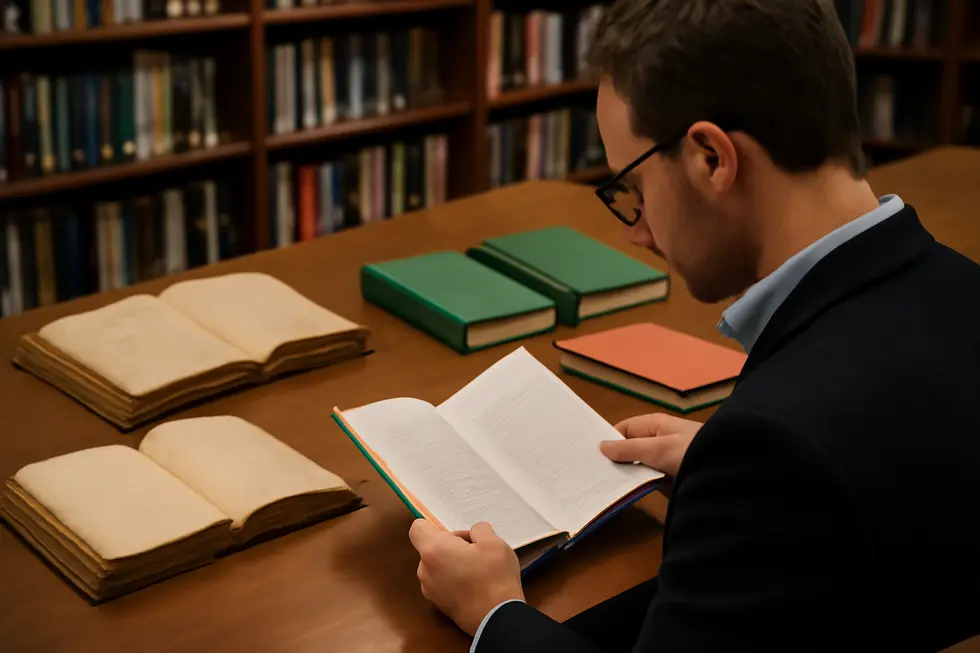
1. Navigating Copyright Protection in Public Domain Translations and Adaptations
Public domain works offer unrestricted access, allowing anyone to use, reproduce, or adapt the original material without seeking permission. However, when it comes to translations or adaptations of these works, copyright law recognizes new creative expression. A translation or adaptation can be protected if it reflects sufficient originality in choice of wording, interpretation, or arrangement. This protection extends exclusively to the new version, while the underlying original remains free for public use. Consequently, others may freely utilize the original public domain content but must avoid copying your specific translation or adaptation without authorization. Ethical and scholarly norms also emphasize proper citation of sources, even when dealing with public domain texts. This framework balances wide accessibility to foundational works with safeguards for fresh creative contributions. For more detailed guidance on public domain and derivative works, resources like the Indiana University Libraries Public Domain Guide offer comprehensive insights.
2. Originality and Derivative Rights: Crafting Copyright in Translations and Adaptations of Public Domain Works
Copyright law protects the original expression of ideas, not the ideas themselves. When a work enters the public domain, it becomes free for public use, yet new translations or adaptations of that work can acquire their own copyright if they introduce original creativity. Originality in this context requires independent creation with at least minimal creative input, focusing on unique choices in language, interpretation, or presentation. Derivative rights grant authors exclusive control over creating or authorizing new versions of original works, such as adaptations or translations. However, once the original work is public domain, anyone may produce derivative works without permission, provided these derivatives meet originality standards to claim copyright protection. This balance encourages free access to classic works while recognizing new creative contributions in adaptations. For more details on how derivative rights function, refer to the U.S. Copyright Office Circular 14 and explore related considerations in copyright distribution rights.
3. Cross-Border Complexities in Public Domain Usage: Jurisdictional Nuances for Translations and Derivative Works
Understanding public domain status requires careful navigation of international copyright variations, especially for translations and adaptations. A work public domain in one country may remain protected elsewhere, demanding creators confirm rights across origins, upload locations, and server jurisdictions. Derivative works like translations or restorations often hold separate copyrights despite the base work being free to use. Furthermore, trademark protections can restrict commercial use of public domain characters or brands. While treaties like the Berne Convention set broad standards, national laws differ widely, affecting originality and rights over derivative creations. Additionally, the rise of AI-generated adaptations introduces new uncertainties, prompting evolving legal interpretations. Creators and platforms must therefore exercise comprehensive due diligence in applying copyright language to reflect multilayered protections and varying jurisdictional requirements. For a practical licensing perspective, consult trademark considerations for brand and logo protection.
More detailed insights on navigating these international challenges are available here.
4. Ethical Attribution and Fidelity in Public Domain Translations and Adaptations
Ethical Attribution and Fidelity in Public Domain Translations and Adaptations
Even though public domain works are free to use without legal restrictions, ethical responsibilities persist, especially in translations and adaptations. Translators and adaptors must respect the original author’s intent by maintaining accuracy and avoiding distortions that could mislead audiences. Proper attribution, while not legally mandated for public domain content, honors the original creator and sustains scholarly integrity, fostering trust in academic and cultural discourse. Additionally, some adaptations may fall under licenses like Creative Commons, imposing specific attribution and use conditions that intertwine legal and ethical duties. In sensitive contexts such as legal translations, accuracy and confidentiality demand rigorous human oversight despite advances in AI. These practices ensure that adaptations preserve the original work’s spirit and meaning while transparently acknowledging sources.
For more on ethical and legal best practices in usage rights, see copyright distribution rights.
5. Navigating Public Domain Translations and Adaptations: Practical Strategies and Trusted Resources
Effectively managing copyright language for translations and adaptations of public domain works requires careful verification and clear documentation. Though public domain works are free to use without permission, confirming their status is critical, as copyright terms vary globally and by work type. Translations or adaptations introduce new creative elements, potentially generating fresh copyrights distinct from the original. Properly citing sources—even for public domain materials—is vital to maintain academic integrity and avoid plagiarism. When handling copyrighted materials, securing explicit permissions tailored to intended uses becomes essential, especially for derivative works. Utilizing open licenses like Creative Commons can facilitate lawful sharing while protecting creators’ interests. Practical application of these principles depends on leveraging authoritative tools and guides, such as those offered by Indiana University Libraries, and consulting centralized resources like Cornell’s Copyright Information Center. This conscientious approach ensures that the nuanced interplay between public domain status and new creative expression is respected and clearly communicated within copyright language.
Chapter 5: Addressing AI-Generated Content in Copyright Language
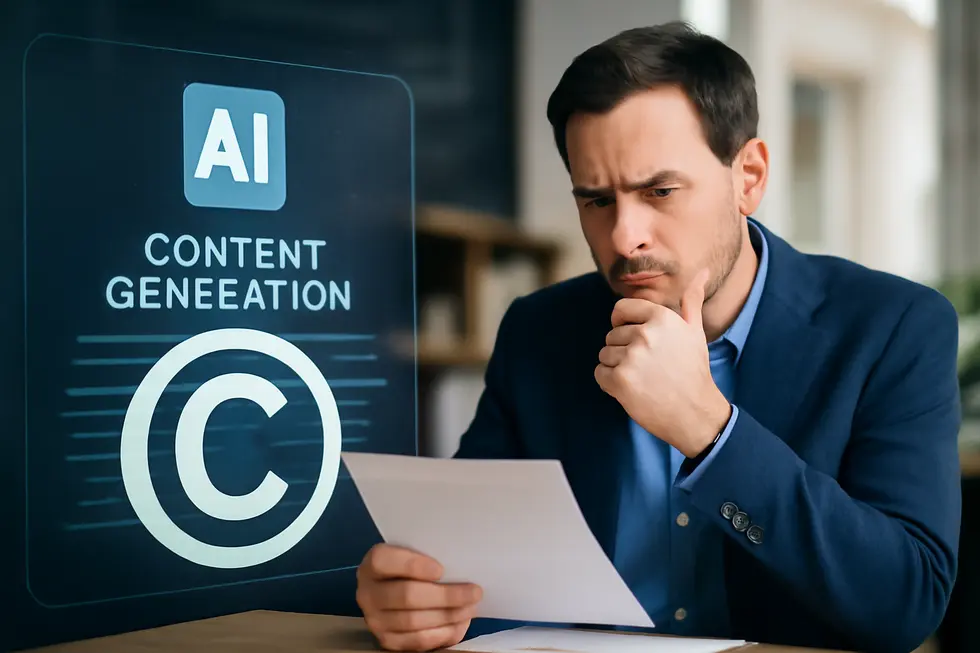
1. Clarifying Human Authorship: Legal Boundaries for AI-Created Works
Human authorship remains the cornerstone of copyright protection, requiring that a natural person create an original work fixed in a tangible medium with minimal creativity. Current copyright law does not recognize purely AI-generated content as eligible for protection because machines cannot be authors. Instead, courts and the U.S. Copyright Office stress that meaningful human involvement—such as editing, curating, or arranging AI output—is essential to transform AI-produced material into protectable content. This threshold ensures the protection rewards genuine creativity rather than automated generation. The UK presents a distinct yet ambiguous approach, granting copyright to the person who arranges AI creation in absence of human authorship, although this remains unsettled. Understanding these nuances is vital for creators integrating AI tools, as only substantial human input can secure copyright ownership and align with legal frameworks. For more detailed guidance, visit this analysis on copyright rights for business owners. External insights on authorship clarifications can be found at The Legal School.
2. Defining Boundaries: Excluding Purely AI-Generated Content from Copyright Claims
Copyright protection hinges on human creativity, a principle firmly upheld by U.S. law and the 2025 Copyright Office policy. Works created entirely by artificial intelligence, without any human authorship or creative input, do not qualify for copyright. When registering a mixed work containing both human and AI-generated elements, it is essential to precisely exclude the purely AI-originated portions. This exclusion must be clearly disclosed in the “Material Excluded” section of the application, specifying which content was generated by AI. Failing to do so risks rejection of the registration claim. The delineation ensures that copyright continues to safeguard only human intellectual effort while acknowledging AI’s evolving role in content creation. Applicants should carefully assess and describe the extent of AI involvement to maintain compliance. For more guidance on managing copyrights in the digital age, see the copyright-definition-computer resource and consult the U.S. Copyright Office’s detailed materials on AI-generated content at https://www.authorsalliance.org/resources/generative-ai/.
3. Decoding Legal Challenges of AI Training Data in Copyright Language
AI training data presents complex legal challenges for copyright language because reproducing copyrighted works during model training may infringe exclusive rights unless authorized. Central to this debate is fair use, an unsettled doctrine scrutinized in ongoing litigation where unauthorized scraping of copyrighted content for AI training faces legal opposition. Additionally, the U.S. Copyright Office’s 2025 guidance clarifies that purely AI-generated works lack the required human authorship for protection, although outputs with meaningful human input may qualify case by case. To mitigate legal risks, entities developing AI can secure licenses or focus on public domain and open-source materials. Recent lawsuits illustrate rising judicial attention to both the use of copyrighted data in training and the ownership of AI-generated outputs, signaling evolving copyright language must address these nuances. For deeper legal insights, see the Hugging Face blog analysis and explore related resources on copyright distribution rights in business.
4. Navigating Legal Challenges and Emerging Litigation Around AI-Generated Works
Copyright law currently requires human authorship, rendering purely AI-generated works ineligible for protection. This principle, reinforced by pivotal decisions such as Thaler v. Perlmutter, leaves AI creations legally unprotected unless significant human input exists. However, legal disputes have intensified over AI training practices, as models often ingest vast amounts of copyrighted material without explicit authorization. The question of whether such use qualifies as fair use remains unresolved, sparking ongoing lawsuits against entities accused of infringing reproduction rights. Jurisdictions vary slightly, but most emphasize human ownership and reject machines as authors. These developments highlight a shifting legal landscape where courts scrutinize unauthorized use during AI model development alongside derivative works that may mirror copyrighted content. For deeper guidance and updates on these unfolding issues, the U.S. Copyright Office’s 2025 report offers an authoritative perspective. For more on copyright protections relevant to creators, visit copyright distribution rights for businesses.
https://huggingface.co/blog/jonathanagustin/ai-copyright-analysis-2025
5. Balancing Human Authorship and Legal Risks in Copyright Language for AI-Generated Content
The U.S. Copyright Office firmly requires meaningful human authorship for protection, excluding purely AI-generated works from copyright rights. When AI outputs incorporate discernible human creative input, these works may qualify under current law. However, creators must carefully document this involvement to meet registration standards. Legal challenges arise because generative AI often relies on vast datasets scraped without permission, sparking infringement claims. The so-called “Snoopy Problem” highlights risks when AI reproduces protected characters or artistic elements, potentially creating unauthorized derivative works. While courts generally don’t protect an artist’s overall style, specific protected characters and distinctive elements remain safeguarded, necessitating cautious use of AI to avoid copying. Practical compliance demands auditing AI-generated content rigorously, avoiding prompts based on copyrighted material unless licensed. This evolving landscape calls for precise, transparent copyright language that clarifies human authorship and anticipates infringement risks, enabling creators to navigate these complexities confidently. For official guidelines, consult the U.S. Copyright Office’s January 2025 report on copyrightability.
Chapter 6: Practical Examples and Best Practices for Drafting Copyright Language
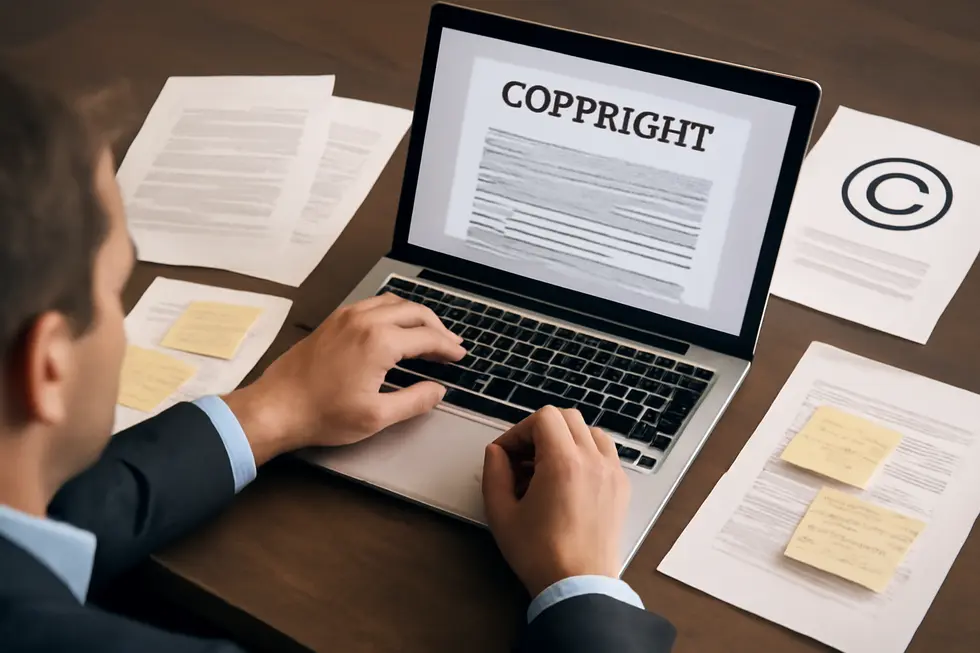
1. Crafting Precise and Effective Copyright Notices: Key Identification Elements and Best Practices
Copyright notices serve as clear markers asserting legal protection over creative works. A well-crafted notice typically includes three core components: the © symbol or the word “Copyright,” the year of first publication, and the name of the copyright owner. These elements establish ownership and the inception of protection, helping to deter unauthorized use and inform users of their rights. Best practice advises using precise and unambiguous language to avoid confusion about permitted uses or restrictions. Adding statements like “All rights reserved” reinforces exclusive control, while clarifying fair use allowances supports compliance. Regularly documenting these details and updating notices ensures continued legal clarity across evolving works. Educating creators and users about these conventions fosters stronger respect for intellectual property. For deeper insight into copyright notice drafting and fair use considerations, see the Naval War College LibGuide on Fair Use. Discover how clear ownership claims impact rights distribution in business contexts at copyright distribution rights for business.
2. Customizing Copyright Language for Audience and Content: Strategies for Clear, Effective Protection
Effective copyright language must be tailored to both the intended audience and the specific type of content it protects. Start by identifying the audience—whether casual readers, specialized professionals, or user-generated content contributors—to determine the clarity and complexity of the language. Casual blog audiences benefit from simple © notices with the owner’s name and year, while formal print publications require detailed statements including licensing contacts and explicit rights granted. Different media also influence the choice of symbols or wording; websites often use the © symbol for brevity, whereas printed works favor the spelled-out “Copyright.” Moreover, content types like articles, videos, or software necessitate disclaimers that fit their typical uses and distribution methods. Including fair use notes for educational audiences can foster respect and comprehension. Placement matters too: copyright language should be noticeable yet unobtrusive, such as in footers or end credits. Taking these factors into account ensures both legal robustness and user understanding, promoting proper respect for intellectual property. For further guidance on drafting tailored copyright notices by content and audience, consult LegalKart’s step-by-step guide.
3. Crafting Clear and Effective Copyright Assignment Clauses for Reliable Rights Transfer
A well-drafted copyright assignment clause is essential for a valid transfer of ownership. It must use precise, present-tense terms, such as “hereby assigns,” to ensure immediate and enforceable rights transfer, avoiding vague future promises like “shall assign.” The clause should accurately describe the copyrighted work, define the scope of rights assigned—including reproduction, distribution, adaptation, and public performance—and specify territorial and temporal extent. Clear payment terms and any retained rights or moral rights must be stated explicitly to avoid disputes. Additionally, termination provisions clarify conditions to end the agreement and its effects. Formal requirements demand the clause be in writing and signed by the assignor, complying with relevant jurisdictional laws. Complex works benefit from annexes detailing rights and works referenced, reinforcing enforceability. This attention to detail fosters clarity and legal certainty in copyright assignments. For detailed legal text preparation, consulting authoritative resources and templates from reputable sources is advisable, such as those provided by the U.S. Copyright Office.
4. Crafting Clear Attribution and Licensing Statements for Effective Copyright Communication
Attribution and licensing statements are vital components in copyright language, ensuring creators receive proper credit while outlining permissible uses. Effective attribution typically includes the work’s title, author, source, and license type, often following standardized formats like TASL (Title, Author, Source, License). For copyrighted content, statements might read: From Title, by Author (Year), Source. Copyright Year by Copyright Holder. Reprinted or adapted with permission. In contrast, Creative Commons licenses require explicit license references, often linked to official license texts and accompanied by CC logos for clarity. Licensing statements transparently specify user rights and restrictions, sometimes offering multiple options to balance openness and control. When drafting such language, incorporate the © symbol, publication year, owner name, and clear rights statements—such as “All rights reserved” or specified allowances—and provide contact details for licensing inquiries. Prominent placement of attributions near the content fosters transparency and legal clarity. For businesses seeking tailored guidance on copyright protection and rights management, reviewing detailed resources on copyright distribution rights in business is highly recommended. For authoritative drafting advice, consulting official guidelines from the U.S. Copyright Office ensures adherence to current legal standards.
5. Ensuring Clarity and Compliance: Digital Communication and Contact Details in Copyright Language
Effective copyright language in digital environments hinges on transparent communication and accessible contact information. Including explicit contact details—such as email, physical address, and phone number—facilitates compliance with laws like the DMCA by enabling clear channels for infringement claims. Transparent online policies outlining how users can submit takedown or counter-notices build trust and clarify legal rights. Maintaining thorough documentation of all copyright-related communications supports good faith and legal defenses when necessary. Beyond legal requirements, educating users about fair use and proper content use fosters responsible engagement. Collaborative licensing practices and ethical AI considerations can also be reflected in tailored copyright statements. These elements combine to create copyright language that not only asserts ownership but also promotes respectful, informed use of digital content. For in-depth guidance on DMCA compliance and record-keeping, see this comprehensive resource: https://patentpc.com/blog/dmca-compliance-for-educational-platforms-a-complete-guide. Relevant insights on copyright distribution rights for business contexts can be explored at copyright distribution rights.
Final thoughts
Copyright language is more than legal jargon—it’s a vital tool for business owners to protect intellectual property and maintain control over creative works. By understanding key terms and notices, recognizing exclusive rights, incorporating fair use disclaimers, accounting for public domain nuances, and addressing AI-generated content, business owners can craft robust copyright statements tailored to their needs. Adopting best practices in drafting ensures clarity, minimizes disputes, and maximizes protections. Embracing this knowledge empowers your business to secure its creative foundation confidently and strategically.
Your IP is the foundation of your success – let’s protect it together before it’s too late. We can’t wait to help you turn your ideas into legally secured assets.
About us
undefined
